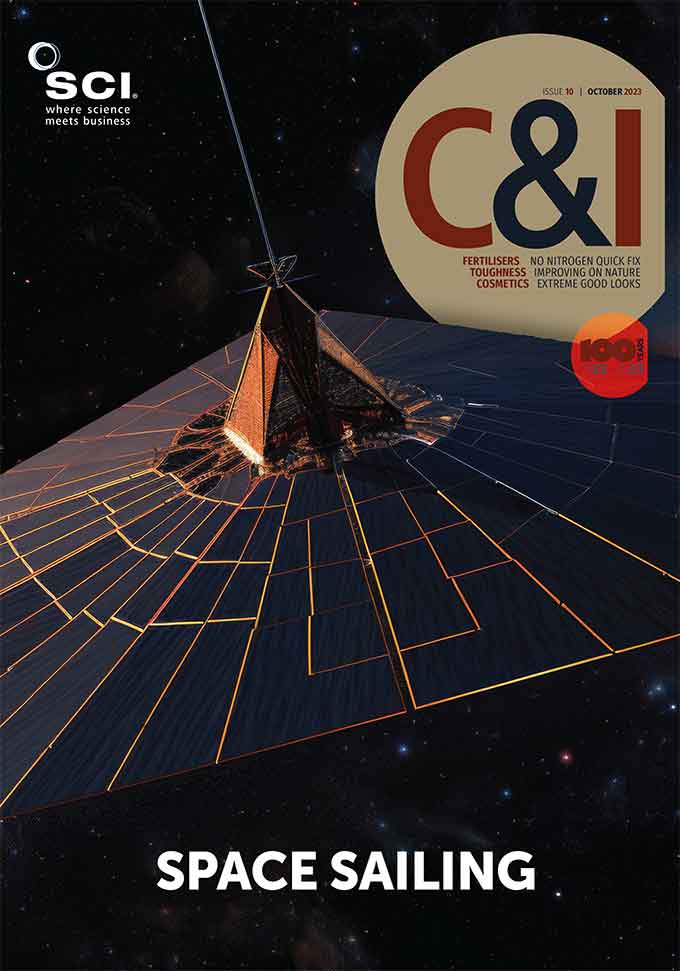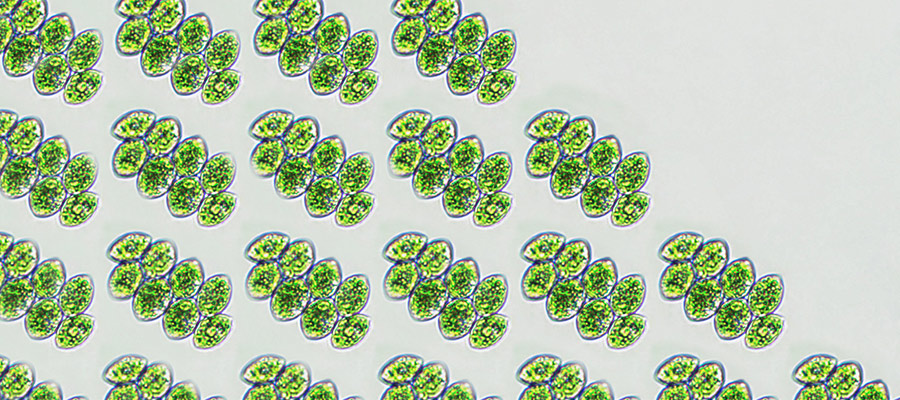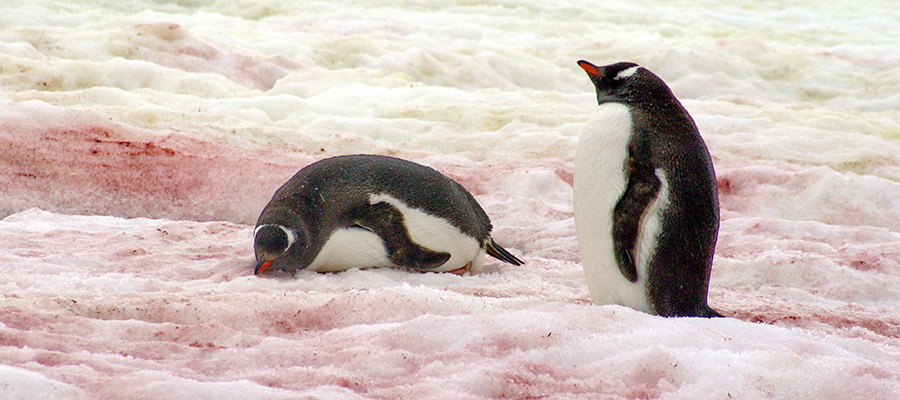FEATURE BY JASMIN FOX-SKELLY | 18 OCTOBER 2023
From Arctic fish to desert algae, creatures thriving in extreme environments are inspiring the development of cosmetics and anti-ageing creams, reports Jasmin Fox-Skelly
In the picturesque bay of Douarnenez in Brittany, France, a colony of mussels clings to the rocks. During high tide the mussels are protected by water, but at low tide they face an onslaught of extreme heat, dryness, and ultraviolet radiation. Luckily, the mussels are protected from the harsh environment by a type of marine bacteria called Pseudoalteromonas.
A so-called extremophile, Pseudoalteromonas sp. are adapted to survive in hostile conditions. Extremophiles can be found living in pools of lava, salt lakes, desert valleys and in permafrost. Some, such as the microscopic eight-legged tardigrade, have even survived being blasted off into space. Now, many cosmetics companies believe the same adaptations that help extremophiles survive could also help rejuvenate tired and damaged skin. As a result, ingredients derived from extremophiles are increasingly finding their way into face serums and creams.
To protect itself from drying out, Pseudoalteromonas secretes a slimy, sugary substance containing exopolysaccharides. Exopolysaccharides form an essential part of the bacterial biofilm – a sticky residue bacteria use to communicate with one another and adhere to surfaces. However, the slimy ‘goo’ doesn’t just protect the bacteria; it absorbs moisture from the air, stopping the mussels from drying out too.
Could Pseudoalteromonas slime prove useful to humans? Spanish cosmetics ingredient company Lipotech believes so. The ‘goo’ is rich in a monosaccharide also found in hyaluronic acid, an ingredient used in numerous cosmetic creams that traps moisture in skin and reduces the appearance of wrinkles and fine lines. Since 2011, Lipotech has optimised the strain of Pseudoalteromonas to produce ‘hyadisine’, an active ingredient that, according to tests, can reduce the appearance of lines in just two hours[1].
Meanwhile, French ingredients firm Seppic has isolated a special pigment that helps a strain of desert microalgae (Scenedesmus sahel) cope with extremely high levels of UV radiation. According to the company, the ingredient reduces skin dryness and wrinkles. Florida-based SMA Collaboratives, on the other hand, markets an ingredient derived from Antarctic bacteria. These microbes produce glyceryl glucoside and exopolysaccharides, which increase moisture in the skin by opening aquaporins – protein pores in the cell membrane that facilitate water transport.
Elsewhere, Massachusetts-based biotech firm A/F Protein markets a range of skincare products containing a protein derived from Arctic fish, which happily swim in waters as cold as -1.7 to -1.8°C, yet don’t freeze. If ice crystals did suddenly form in their blood, the sharp crystal edges would perforate cells, killing the fish in a matter of minutes. In the 1950s, researchers discovered the fish survive by producing a special ‘antifreeze’ protein (AFP)[2]. Later research showed many species of fish, crustaceans, fungi, plants and even algae produce such proteins[3].
‘The protein works by basically grabbing onto water molecules on two out of three axes and preventing them from forming ice crystals,’ says Elliot Entis, Founder and CEO of A/F Protein, which produces and sells LIFTLAB and CHROMAT skincare products containing the protein.
‘It lowers the freezing point of the blood, but also prevents ice crystals from growing even if temperatures do go below the freezing point. Instead of ice crystals you get a vitreous glass-like medium, which protects cells from puncture wounds and cell death.’
Entis formed A/F Protein after reading an article in the New York Times in 1991 about research conducted by Boris Rubinsky, Professor of bioengineering at the University of California, Berkeley, US[4]. At the time, Rubinsky had been conducting research on antifreeze proteins, when he inadvertently discovered that, in addition to lowering the freezing point of water, they also preserve cells.
‘He froze pig eggs treated with antifreeze proteins and discovered that the eggs were still viable when thawed,’ says Entis.
Entis met with Rubinsky, and together they formed a company (A/F Protein) specialising in providing purified AFP to laboratories around the world. The protein was mainly used to freeze and preserve cells, tissues and organs. Years later, they were approached by a large skincare company interested in using the protein in its products.
‘We did have evidence the protein could be useful in helping certain aspects of skincare, because if you’re trying to preserve tissues and organs, the skin is essentially a large organ,’ says Entis.
A/F Protein agreed to sell the protein to the company, but terminated the agreement two years later when they realised the firm was only putting in 1/100th of an active dose into their creams. Instead, Entis and his team decided to commercialise the protein themselves.
First, they embarked upon a series of laboratory and clinical studies to prove the efficacy of the formulation. In one test, researchers applied a cosmetic solution, LIFT + FIX, containing the antifreeze protein (AFP) to a group of volunteers. They then exposed the panel to UV-A and UV-B radiation. Compared with a control group, the skin cream reduced erythema – an allergic red skin rash – by 95%.
Next, they tested the ability of the antifreeze protein to protect against osmotic stress, whereby water rushes into or out of cells due to a sudden change in the surrounding solute concentration. In laboratory tests, keratinocytes (skin cells) pretreated with AFPs were protected from the effects of osmotic shock. It’s thought that the AFP binds to cell membranes, blocks ion channels and therefore stops water from leaving cells.
Entis says the same cellular mechanisms that protect fish from extreme cold are responsible for its preservative effects on human skin. For example, tests show that within 24 hours, keratinocytes treated with AFP begin to produce genes that code for heat-shock proteins and antioxidants. Heat shock proteins are a family of proteins produced by cells in response to injury or exposure to stress. They act like molecular chaperones, binding to and preventing other intracellular proteins from misfolding or aggregating.
‘Any time a protein unfolds you have a problem as it stops being efficacious and doing its job,’ says Entis. ‘Heat shock proteins stop this from happening, helping to preserve tissues.’
AFP also ramps up production of essential proteins like collagen, elastin and fibrinogen. These are the building blocks that hold skin cells together tightly, increasing skin firmness and elasticity. As we age, we tend to lose fibroblasts, the type of skin cell that produces these proteins, and our skin suffers as a result. However, applying AFPs to the skin increased the number of fibroblasts in subjects over 30 years of age.
‘Antioxidants, heat shock proteins, elastins and collagens – these are all wonderful things which fortify the skin and give it strength,’ says Entis. ‘All of these are overproduced when antifreeze proteins are used in proper concentrations in our serums.’
Protective pigments
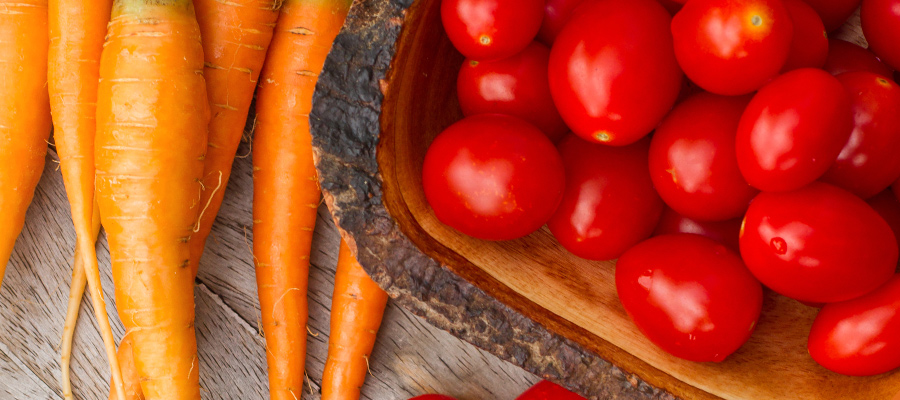
Phytoene makes carrots orange and tomatoes red.
Other beneficial compounds from extremophiles include phytoene, a precursor to carotenoid pigments produced by plants and algae - and also the reason that carrots are orange, tomatoes are red, and daffodils are yellow. As well as providing colour, studies show phytoene protects cells from harmful free radicals[5], making it a valuable ingredient for anti-ageing creams.
Extracting phytoene from plants is difficult without also obtaining a mix of other carotenoids. Instead, French biotech Deinove is using Deinococcus geothermalis to produce pure phytoene. Deinococcus are among the most radiation-resistant bacteria ever discovered, showing resistance to damage by ionising and UV radiation, desiccation and oxidising agents, while their capacity to repair DNA damage is unparalleled. The strain of D. geothermalis used by Deinove was discovered living in hot volcanic springs on Réunion Island, a French territory in the Indian Ocean. Deinove first optimised the strain to maximise ingredient yields, before including it in its Phyt-N-Resist range of anti-aging and cosmetic skin care products in 2018, however, as of November 2022, the company is now in receivership.
What is the future of the extremophile cosmetics market? Compared with traditionally derived ingredients, there is one obvious hurdle. Extremophiles live in remote and difficult to access environments. First, you need to find and isolate them, then determine the exact conditions to grow them to maximise yields of their valuable metabolites.
The challenge is worth it, says Henes. ‘The appeal of extremophiles from the consumer’s perspective is that products from microbes are natural and sustainable.’
Snow algae surprise
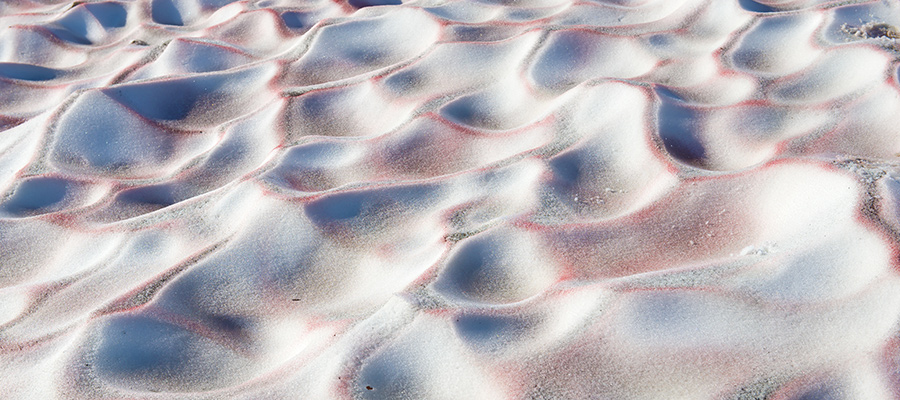
Carotenoids turn snow algae pink in winter.
Snow algae, single-celled organisms that grow on glaciers and alpine mountain tops, produce carotenoids as a defence against UV radiation. In winter the algae are green, but in summer, thanks to the carotenoids, they turn pink. The algae are also able to enter a state similar to hibernation, in which the organism slows down and reduces caloric intake. As a result, they can survive drying out, heat up to +60°C and cold down to -25°C. In contrast, most other plants either reduce their metabolic activities or are simply unable to survive at these temperatures. Snow algae have even been sent to the International Space Station.
In 2014, Swiss company Mibelle Biochemistry launched an anti-ageing ingredient derived from the snow algae. First, the green algae are grown for three weeks in a bioreactor, with light and nutrients. They are then deprived of nutrients and bombarded with UV light to stimulate carotenoid production, resulting in the red-coloured spore form. The scientists then harvest the snow algae and convert them into a powder form. According to Mibelle Biochemistry, snow algae powder reduces skin ageing by mimicking the effects of calorie restriction on cell longevity. Reducing the number of calories consumed can reduce signs of biological aging and extend the lifespan of organisms such as worms, flies and mice.
A gene that seems to be key to this phenomenon is the Klotho gene. Mice that are deficient in Klotho undergo accelerated ageing, while rodents with an overexpressed version of the gene live 30% longer[6]. Tests by Mibelle Biochemistry show that, when applied to skin, snow algae powder causes fibroblasts – the cells that secrete collagen – to express the Klotho gene. In turn, the Klotho gene seems to promote longevity by influencing the insulin/IGF-1 pathway.
‘The insulin/IGF-1 receptor acts like a sensor, detecting levels of nutrients within the cell,’ says Bernhard Henes, head of development at Mibelle Biochemistry. ‘When nutrients levels are low, the receptor is blocked, causing the transcription factor FOXO to become activated.’
Transcription factors are proteins that help turn specific genes ‘on’ or ‘off’ by binding to nearby DNA. In the case of FOXO, when activated it turns on genes that promote the protection and repair of cells. For example, in skin cells, this could mean the production of collagen and a rejuvenation of the dermal epidermal junction. This would serve to reinforce the skin barrier, making the skin appear younger.
Meanwhile, tests also show that snow algae powder also activates a second sensor, known as AMP-activated protein kinase (AMPK). This sensor detects when levels of ATP – the body’s energy currency – fall.
‘During calorie restriction and after exercise the AMPK enzyme becomes activated, which serves to restore the ATP level by shutting down energy consuming processes that are not needed for survival,’ says Henes. ‘However, the role of AMPK is not restricted to control of the energy metabolism, and AMPK also acts as a kind of master switch, regulating several transcription factors related to longevity and ageing.’
For example, AMPK can also activate FOXO, the same transcription factor responsible for promoting the protection and repair of cells. AMPK also activates other transcription factors such as Nrf2, which serves to boost the skin’s defence systems, and NF-κB, which inhibits inflammatory reactions.
‘Snow algae powder essentially pushes the same beauty buttons as diet and exercise, meaning our skin stays younger for longer,’ says Henes.
References
1 Lipotec finds hyaluronic acidlike effects in marine bacterium - Costmetics Business
2 J. Cell. Comp. Physiol., 1957, 49, 5.
3 Curr. Protein Pept. Sci., 2017, 18(3), 262.
4 New York Times, Campus Life: Berkeley; Scientist Hopes Fish ‘Antifreeze’ Can Save Organs, March 24, 1991, Section 1, 44.
5 Nutrients, 2010, 2(8), 903.
6 Science, 2005, 309(5742), 1829.

